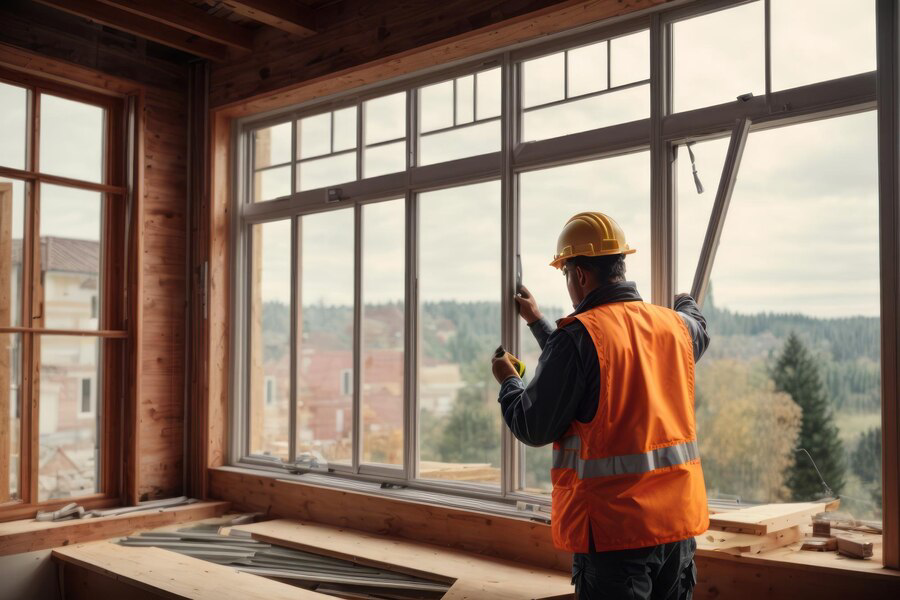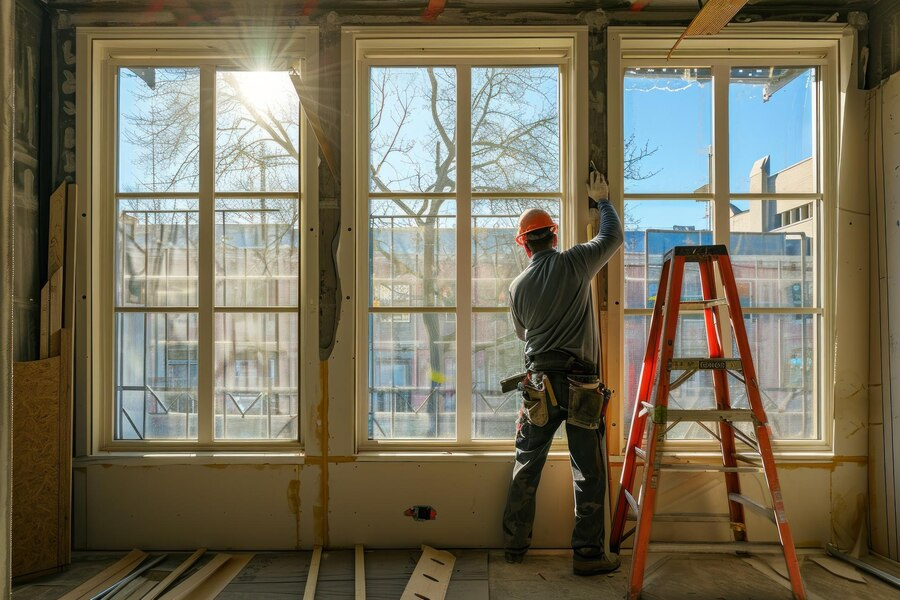
How to Select Replacement Windows for Historical Homes
When selecting replacement windows for historical homes, it’s essential to strike a balance between preserving the home’s original charm and enhancing energy efficiency. Start by researching the architectural style of your home to choose windows that match its historical character. Look for materials that mimic the original, like wood or high-quality fiberglass, and consider double or triple-pane glass for better insulation. Don’t forget to check local regulations or guidelines, as some areas may have specific requirements for historical properties. Ultimately, the right windows should complement your home while keeping its unique story alive.
Understanding Historical Architecture Styles
When it comes to replacement windows for historical homes, understanding the architectural style is crucial. Each style, whether it’s Victorian, Colonial, or Craftsman, has distinct characteristics that define its aesthetic. Researching the specific details of your home’s design can guide your choices, helping you select windows that maintain the building’s integrity. Pay attention to elements like the shape, size, and arrangement of windows, as well as the materials used. Staying true to the original style not only enhances the home’s appeal but also respects its historical significance.

Key Features of Victorian Architecture
Victorian architecture is known for its intricate details and ornamental designs. Features often include bay windows, elaborate trim, and asymmetrical shapes. When replacing windows, focus on maintaining these unique elements, choosing options that reflect the grandeur of the era. Stained glass and divided-light designs can further enhance authenticity, ensuring the new windows harmonize beautifully with the overall aesthetic of your Victorian home.
Colonial Window Characteristics
Colonial homes typically feature symmetrical designs with evenly spaced windows. Double-hung sash windows are common, often with simple trim and shutters. When selecting replacement windows for a Colonial-style home, aim for materials and styles that reflect this balance and symmetry. Options with grilles can replicate the traditional look while improving energy efficiency. Maintaining these characteristics not only preserves the home’s charm but also honors its historical significance.
The Craftsman Window Aesthetic
Craftsman architecture emphasizes natural materials and handcrafted details. Windows in this style often showcase wide, overhanging eaves and exposed rafters, complemented by horizontal lines. When replacing windows, consider those with wood frames and distinctive divided-light designs. The goal is to enhance the home’s organic feel while ensuring energy efficiency. Choosing windows that echo the Craftsman ethos of simplicity and craftsmanship will maintain the integrity of your historic property.
Gothic Revival Window Elements
Gothic Revival architecture features pointed arches and intricate designs, often including tall, narrow windows adorned with decorative glass. When replacing windows in a Gothic Revival home, prioritize styles that replicate these distinct features, ensuring they capture the dramatic essence of the period. Stained glass or intricate grilles can enhance authenticity while providing modern energy efficiency. Maintaining these unique elements will preserve the character and historical value of your home.
Recognizing Regional Variations
Different regions often have unique historical styles influenced by climate and local materials. For instance, homes in warmer climates may feature larger windows for ventilation, while those in colder areas might have smaller, more insulated designs. When selecting replacement windows, it’s vital to recognize these regional variations and choose styles that align with local architectural traditions. This approach not only enhances curb appeal but also ensures the home remains in harmony with its surroundings.
Choosing the Right Materials
Selecting the right materials for replacement windows can significantly impact the preservation of a historical home. Traditional wood windows often offer the best aesthetic match, providing a classic look that complements the architecture. However, modern alternatives like fiberglass or vinyl can offer greater durability and energy efficiency. It’s essential to weigh the pros and cons of each material. For example, while wood can require more maintenance, it can be easier to customize and repair. Consider local climate conditions and your willingness to maintain the windows when making this choice.
Importance of Energy Efficiency
While maintaining the historical charm of your home is important, energy efficiency shouldn’t be overlooked. Many older homes have single-pane windows, which can lead to drafts and higher energy bills. When selecting replacement windows, opt for double or triple-pane glass, which can significantly improve insulation. Additionally, low-emissivity (Low-E) coatings can help control heat transfer, keeping your home comfortable year-round. Balancing energy efficiency with historical accuracy ensures that your home remains both cozy and true to its roots, providing comfort without sacrificing character.
Navigating Local Regulations
Before diving into window replacement, familiarize yourself with local regulations or guidelines related to historical preservation. Many towns or cities have specific rules governing changes to historic properties, which may include restrictions on window style, materials, or size. Consulting with a local preservation society or historical commission can provide clarity on what’s allowed and help avoid costly mistakes. Understanding these regulations is essential to ensure that your renovation efforts align with both legal requirements and the community’s commitment to preserving its historical heritage.
Finding the Right Contractor
Choosing the right contractor for your window replacement project can make a significant difference in the outcome. Look for professionals who specialize in historical renovations and have a solid understanding of preservation practices. Ask for references and examples of previous work on similar projects to gauge their expertise. A knowledgeable contractor will not only ensure that the windows are installed correctly but can also provide valuable advice on materials and styles that respect the home’s history. Effective communication about your vision and expectations is key to a successful partnership.
Balancing Aesthetics and Functionality
Replacement windows for historical homes should effectively balance aesthetics and functionality. While it’s important to choose windows that enhance the home’s original charm, they must also perform well. Consider features such as ease of opening, weather resistance, and security. The design should facilitate natural light and ventilation while fitting seamlessly into the home’s character. Assessing both the visual impact and practical aspects of the windows will help you select options that meet your needs and enhance the overall livability of your historical property.
Exploring Customization Options
Customization can play a vital role in achieving the perfect replacement windows for your historical home. Many manufacturers offer options that allow you to tailor the design to match the original windows closely. This may include selecting specific grid patterns, colors, or finishes that align with your home’s historical style. Customization not only helps preserve the architectural integrity but also adds a personal touch to your home. Taking the time to explore these options ensures that the final product meets both aesthetic desires and functional needs, resulting in a more satisfying renovation.
Budgeting for Replacement Windows
When planning for replacement windows in a historical home, budgeting is essential. Quality windows can be a significant investment, especially if you aim for materials and designs that closely resemble the originals. Start by determining your budget, keeping in mind that saving costs on lower-quality materials may lead to higher long-term expenses in repairs and energy bills. Factor in installation costs and any potential expenses for permits or inspections related to historical preservation. A well-planned budget will help you make informed choices without compromising on quality or historical integrity.
Conclusion
Selecting replacement windows for historical homes in Cleveland requires a careful balance between preserving architectural integrity and ensuring modern functionality. By considering materials, styles, and energy efficiency, homeowners can find windows that honor their property’s heritage while enhancing comfort and value.
At EZ Window Solutions of Cleveland, we understand the unique challenges of renovating historic properties. Our team is dedicated to helping you navigate the selection process, ensuring you make informed decisions that align with your home’s character and your personal preferences. Reach out to us for expert guidance tailored to your needs.


Write a Comment